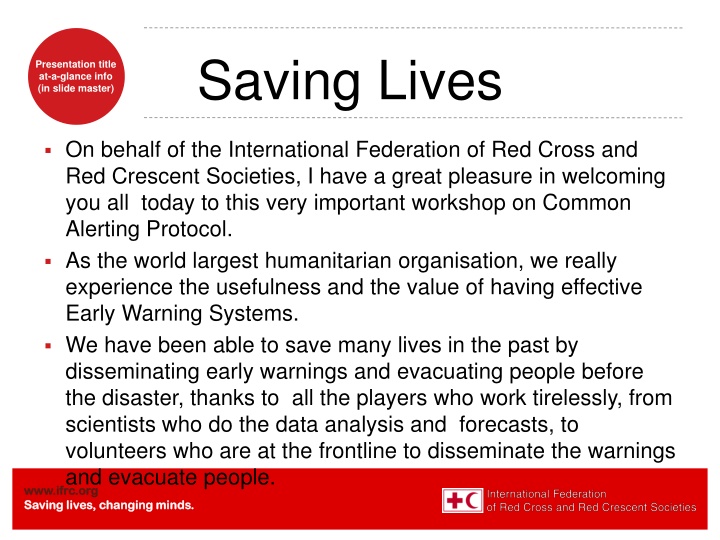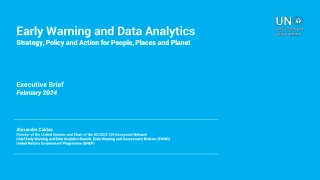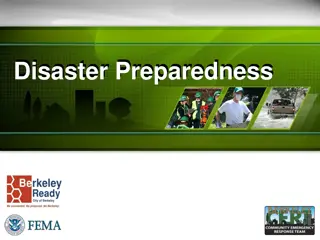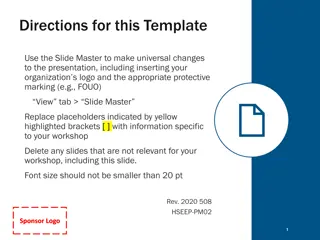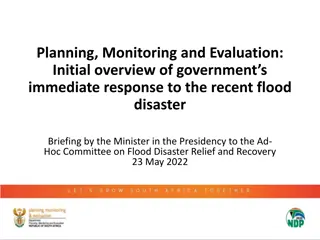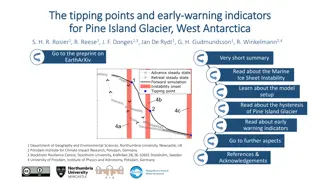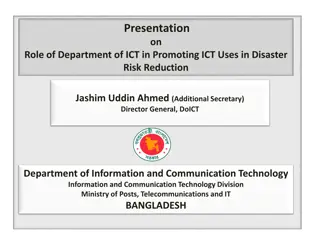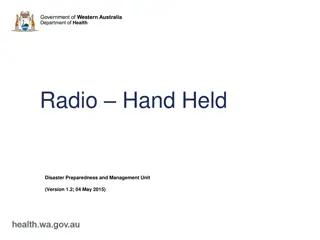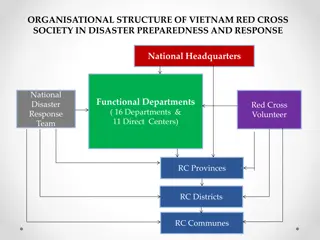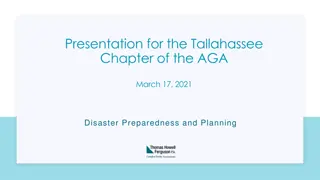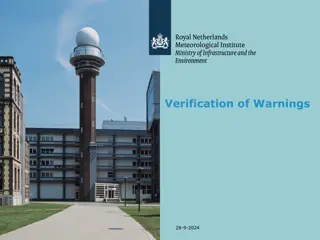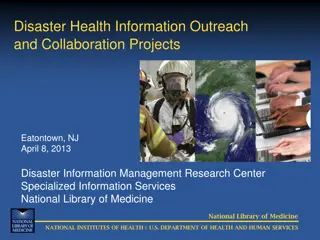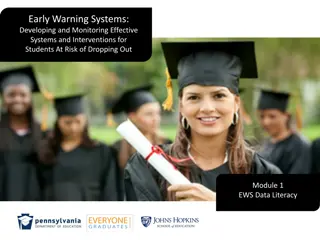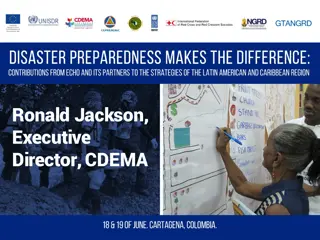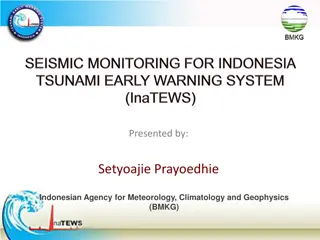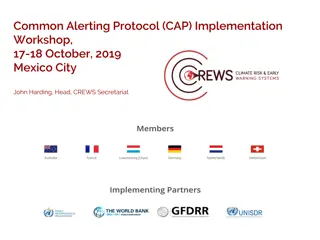Early Warning Systems for Disaster Preparedness
This presentation highlights the importance of effective Early Warning Systems in saving lives during natural disasters. It discusses challenges in disaster patterns, reaching vulnerable populations, user perspectives in message development, and the need for inclusive warning mechanisms.
Download Presentation

Please find below an Image/Link to download the presentation.
The content on the website is provided AS IS for your information and personal use only. It may not be sold, licensed, or shared on other websites without obtaining consent from the author.If you encounter any issues during the download, it is possible that the publisher has removed the file from their server.
You are allowed to download the files provided on this website for personal or commercial use, subject to the condition that they are used lawfully. All files are the property of their respective owners.
The content on the website is provided AS IS for your information and personal use only. It may not be sold, licensed, or shared on other websites without obtaining consent from the author.
E N D
Presentation Transcript
Saving Lives Presentation title at-a-glance info (in slide master) On behalf of the International Federation of Red Cross and Red Crescent Societies, I have a great pleasure in welcoming you all today to this very important workshop on Common Alerting Protocol. As the world largest humanitarian organisation, we really experience the usefulness and the value of having effective Early Warning Systems. We have been able to save many lives in the past by disseminating early warnings and evacuating people before the disaster, thanks to all the players who work tirelessly, from scientists who do the data analysis and forecasts, to volunteers who are at the frontline to disseminate the warnings and evacuate people. www.ifrc.org www.ifrc.org Saving lives, changing minds. Saving lives, changing minds.
Challenges Presentation title at-a-glance info (in slide master) over 70% of the natural disasters in the world are of hydro- metrological in nature. The disaster patterns are changing. Frequency and intensity of disasters are increasing. The risk patterns are changing and the vulnerability and exposure of people to disasters are also increasing. Unpredictability of the hazards due to climate change pose great challenges to scientists to provide accurate forecasts. www.ifrc.org www.ifrc.org Saving lives, changing minds. Saving lives, changing minds.
Reaching the most Vulnerable Presentation title at-a-glance info (in slide master) A robust warning system should reach the most vulnerable people even in remote areas where accessibility is an issue. A good early warning system should incorporate user perspectives and try and develop tailor made information to cater to the needs of the users groups such as disaster managers, farmers, agronomists , Irrigation Engineers and so on . Good early warning mechanism in a country should issue warnings at all timescales from hours, to days, to weeks, to months, to seasons, to years and decades .so that we can take early actions not only to carry out our response on a shorter time scales but also to take longer term actions on prevention and risk reduction and to address the root causes of disasters. www.ifrc.org www.ifrc.org Saving lives, changing minds. Saving lives, changing minds.
User Perspectives important Presentation title at-a-glance info (in slide master) Therefore, while developing standard alert messages, we need to think about number of different factors; How do we cater to the specific needs of the user groups? How do we simplify our messages so that volunteers in remote areas are able to disseminate and communicate warnings to the most vulnerable. How do we ensure that every one can understand our warning messages and act accordingly? How can we develop messages at different timescale, targeting different user groups? www.ifrc.org www.ifrc.org Saving lives, changing minds. Saving lives, changing minds.
Presentation title at-a-glance info (in slide master) www.ifrc.org www.ifrc.org Saving lives, changing minds. Saving lives, changing minds.
